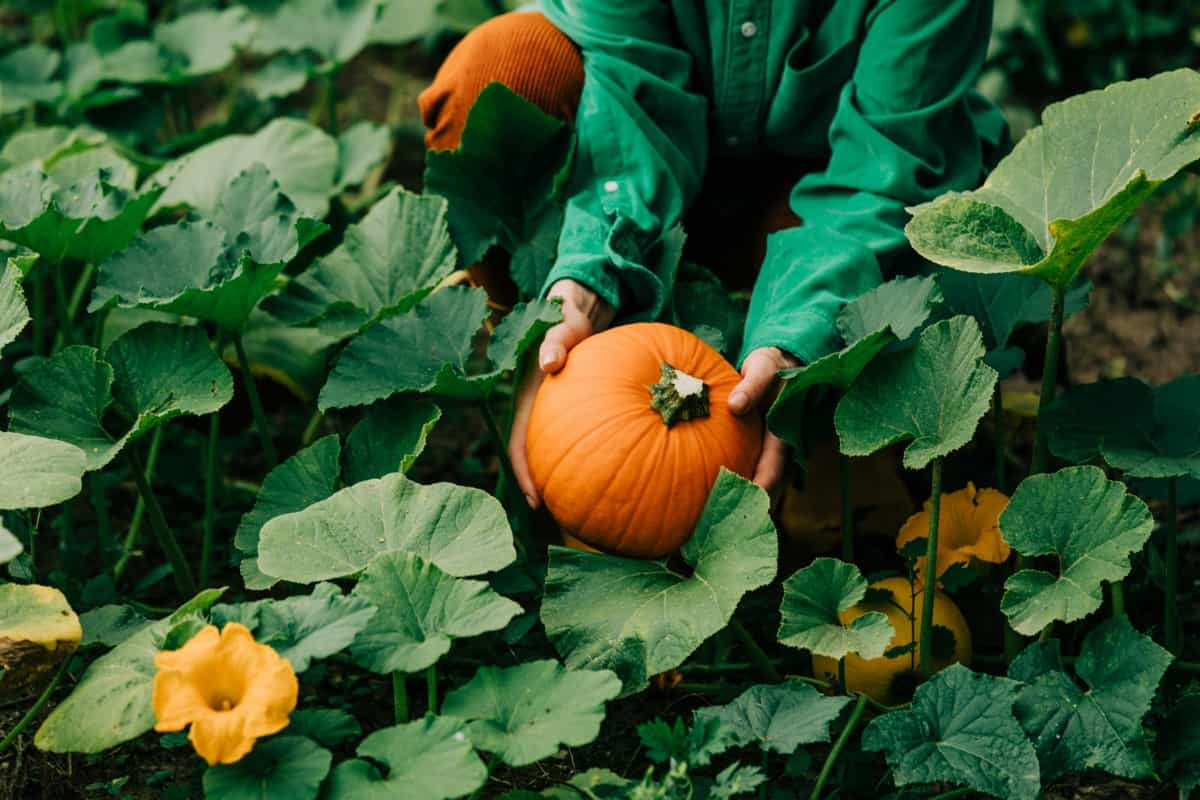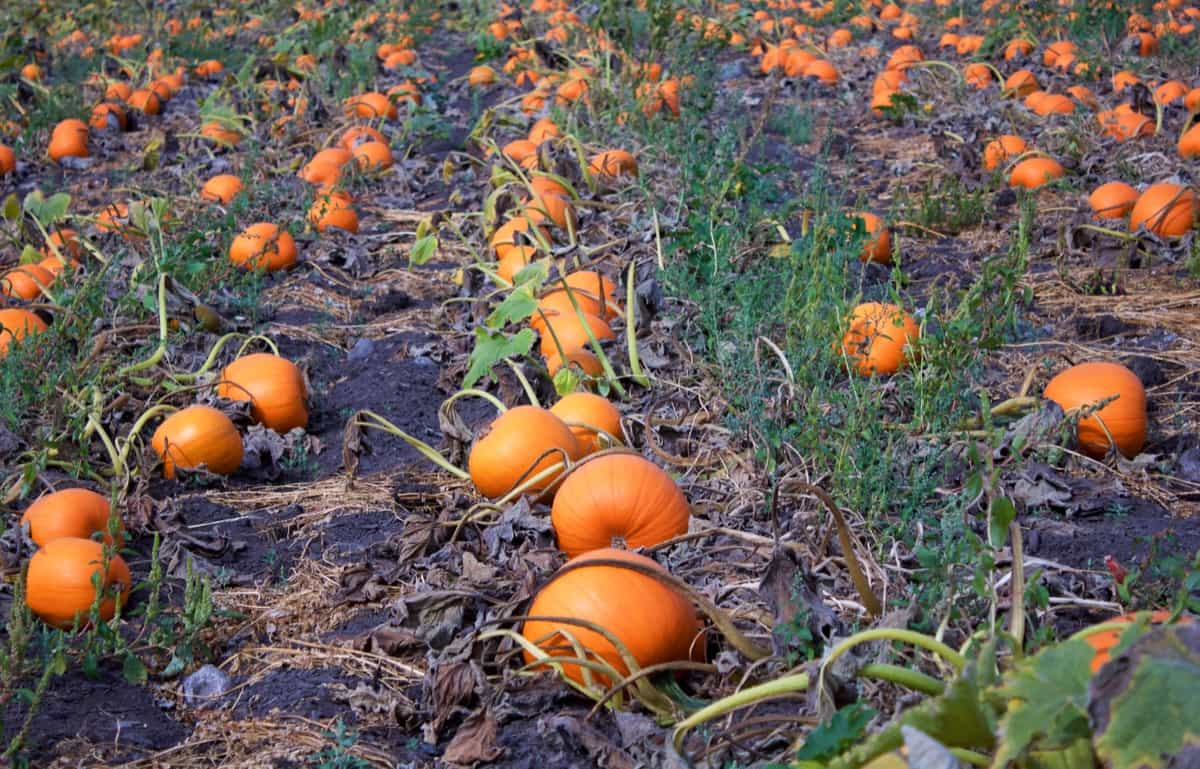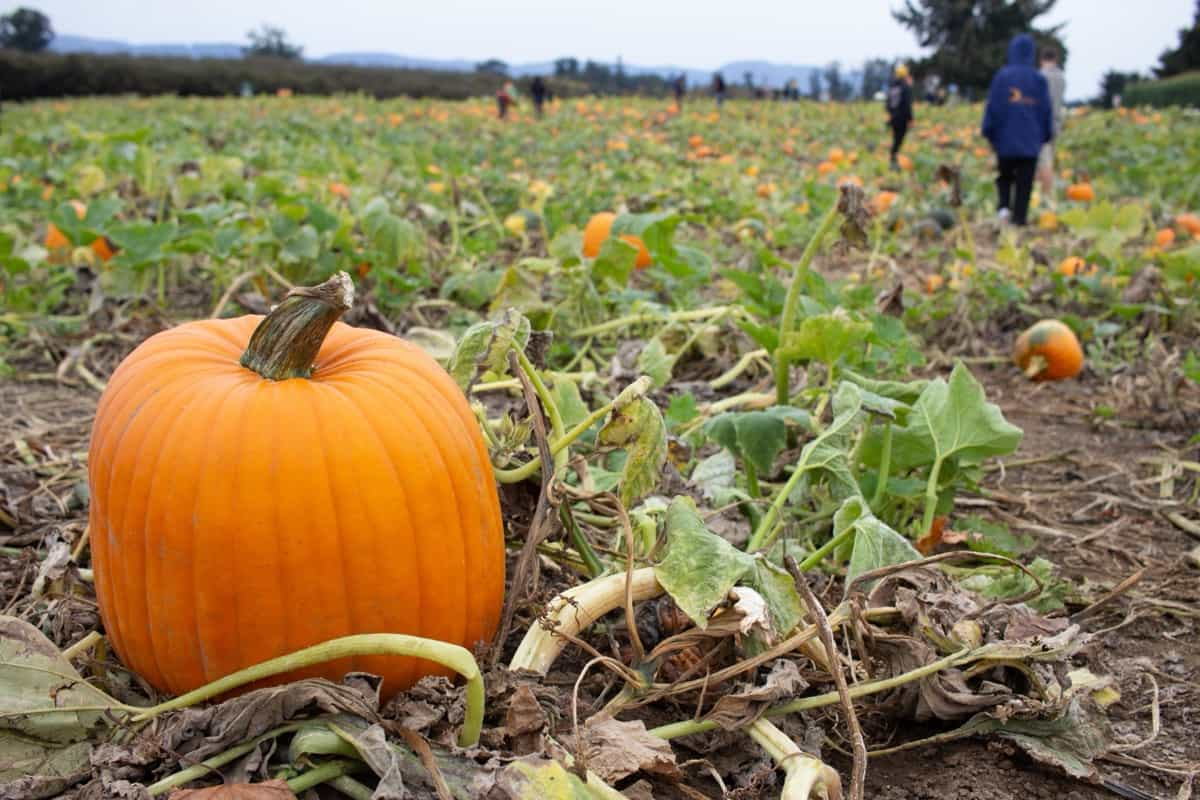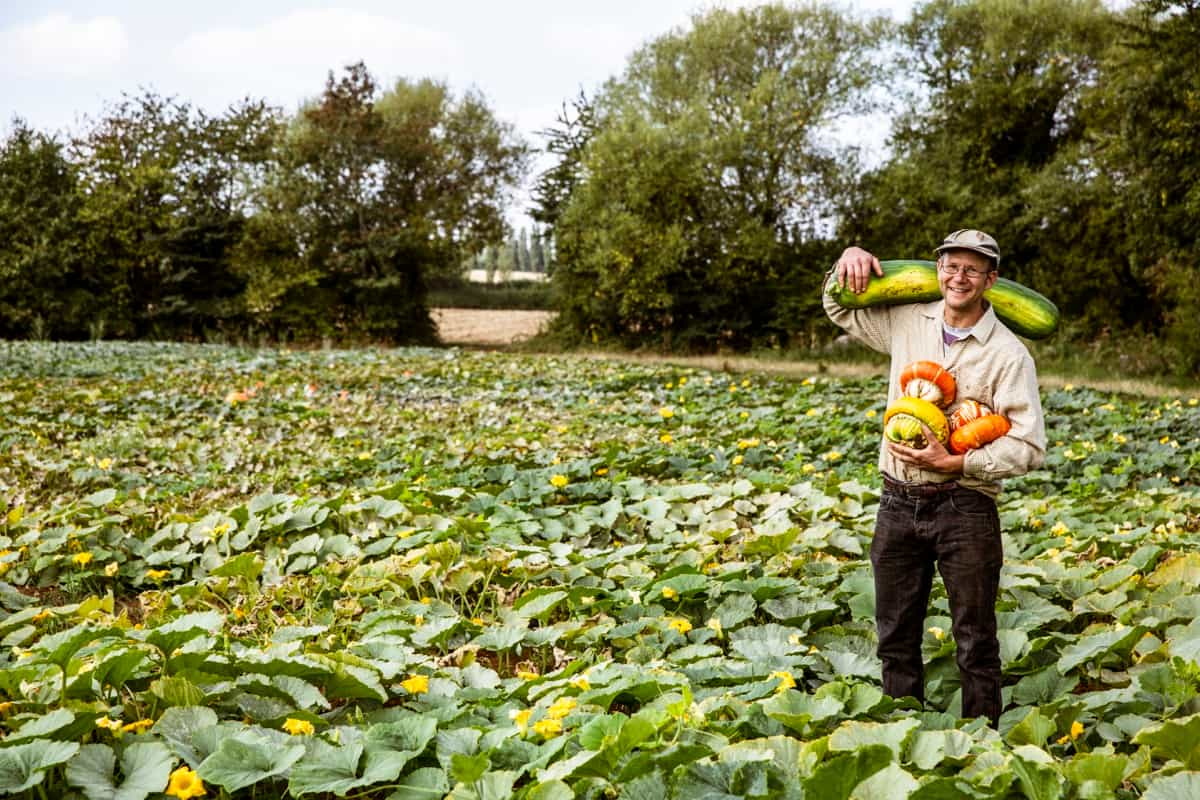Drip irrigation is a crucial aspect of modern agriculture, ensuring efficient water use and enhanced crop yields. Installing drip irrigation in a pumpkin plantation involves various costs, including equipment, labor, and system design. On average, the initial investment per acre can range from Rs. 1,50,000 to Rs. 1,80,000, depending on factors such as the scale of the farm, technology used, and local labor rates.

The costs typically include drip lines, emitters, filters, pumps, and control systems. While this may seem substantial, the long-term benefits, such as water efficiency and increased yield, often outweigh the initial expenses.
Evaluate the Cost of Drip Lines and Emitters for Pumpkin Fields
Drip lines, also known as drip tubing, are responsible for delivering water directly to the plants, minimizing wastage, and ensuring optimal moisture levels. The cost of drip lines is influenced by factors such as material quality, length, and diameter. High-quality drip lines, often made of durable materials like polyethylene, may have a higher upfront cost but offer better longevity and performance.
Emitters, responsible for controlling the flow and distribution of water, also contribute to the overall cost. The type and design of emitters, such as pressure-compensating emitters or drip tape, can affect their price. On average, the cost of drip lines and emitters for pumpkin fields can range from Rs. 15,000 to Rs. 20,000 per acre, depending on the specific requirements and technology used.
Analyze the Expense of Filters and Pressure Regulators in Drip Irrigation Systems
Filters and pressure regulators are essential components of drip irrigation systems, playing a crucial role in maintaining the system’s efficiency and longevity. The cost of filters can vary from Rs. 7,000 to Rs. 10,000 per acre, depending on the type and quality. High-quality filters are vital to avoid clogging of emitters to ensure the delivery of clean water to plants, minimizing maintenance costs.
Pressure regulators, responsible for controlling water pressure within the system, typically range from Rs. 8,000 to Rs. 10,000 per acre. Proper pressure regulation is essential to avoid damage to the drip lines and ensure uniform water distribution. While these components contribute to the initial investment, their role in protecting the entire system and optimizing water usage makes them a worthwhile expense.
Estimate the Cost of Automation and Control Systems in Drip Irrigation for Pumpkin
Automation and control systems enhance the precision and efficiency of drip irrigation in pumpkin farming. The cost of automation can vary widely, ranging from Rs. 20,000 to Rs. 25,000 per acre. These systems offer features such as scheduled watering, remote monitoring, and precise control over water distribution, contributing to water conservation and increased crop yield. Investing in automation can lead to long-term benefits, including labor savings and optimized resource utilization. Farmers should assess their specific needs and budget constraints when considering automation.
In case you missed it: Best Practices to Use Pumpkin Peel in Your Garden for Great Results

Assess the Price of Pumps and Pumping Stations for Drip Irrigation in Pumpkin Farming
Pumps and pumping stations are integral components of drip irrigation systems, responsible for delivering water from the source to the field. The cost of pumps can vary based on factors such as capacity, brand, and power source, ranging from Rs. 30,000 to Rs. 35,000 per acre. Pumping stations, which include infrastructure like pipes and fittings, may incur additional costs.
Investing in high-quality pumps ensures reliable water supply and system performance. Farmers should consider factors such as water source proximity, required pumping capacity, and energy efficiency when selecting pumps for their pumpkin farm. Exploring financing options and potential subsidies for pump installations can help alleviate the financial burden, encouraging farmers to adopt efficient pumping solutions.
Explore the Cost of Fertilizer and Nutrient Injection Systems in Drip Irrigation for Pumpkin
The cost of these systems varies based on the complexity and technology involved, ranging from Rs. 18,000 to Rs. 25,000 per acre. High-quality injection systems enable precise control over nutrient levels, minimizing waste and maximizing plant uptake efficiency. While the initial investment may seem significant, enhanced nutrient management often leads to improved pumpkin yields and quality, justifying the expense. Farmers should consult with agronomists to tailor the nutrient injection system to the specific needs of their pumpkin plantation and explore potential subsidies or incentives for adopting advanced fertilization technologies.
Calculate the Labor and Installation Costs for Drip Irrigation in Pumpkin Plantations
Labor and installation costs are critical components of the overall expense of implementing drip irrigation in pumpkin plantations. Labor costs, including the installation of drip lines, emitters, filters, and other components, can range from Rs. 15,000 to Rs. 20,000 per acre. Professional installation ensures the proper functioning of the system and optimal water distribution.
Installation costs encompass equipment setup, system layout planning, and labor for implementing the entire drip irrigation infrastructure. While these costs contribute to the initial investment, they are crucial for the long-term success of the system. Additionally, farmers may benefit from training programs provided by agricultural authorities to equip them with the necessary skills for system maintenance and troubleshooting, reducing reliance on external labor.
Factor the Maintenance and Repair Expenses for Drip Irrigation Systems in Pumpkin Farming
Maintenance and repair expenses are ongoing considerations in drip irrigation for pumpkin farming. On average, maintenance costs can range from Rs. 10,000 to Rs. 15,000 per acre annually. Regular maintenance, including cleaning filters, inspecting emitters, and monitoring system performance, is essential to prevent clogs and ensure efficient water delivery.
In case you missed it: Long Island Cheese Pumpkin: Growing From Seed, Uses, Benefits, Price, Size, Recipes, Origin, and History

Farmers should factor in potential repair costs, which may include replacing damaged drip lines or malfunctioning components. Investing in high-quality, durable materials during the initial installation can minimize the frequency and extent of repairs. Additionally, staying informed about local service providers and spare part availability can expedite the repair process, reducing downtime and potential crop losses.
Energy Costs Associated with Drip Irrigation in Pumpkin Cultivation
The energy costs associated with drip irrigation in pumpkin cultivation primarily stem from the operation of pumps used to deliver water through the drip lines. The energy consumption depends on factors like pump efficiency, water source distance, and required pressure. On average, energy costs can range from Rs. 8,000 to Rs. 15,000 per acre annually. Employing energy-efficient pumps and optimizing irrigation schedules can contribute to cost savings.
Investing in renewable energy sources, like solar-powered pumps, may offer a sustainable and economical alternative, reducing dependence on conventional electricity. While the initial investment for solar systems can be higher, the long-term savings on energy charges make them an attractive option, especially in regions with abundant sunlight.
Drip Irrigation Cost for Pumpkin Per Acre
| Item | Cost Range (INR) |
| Drip Lines & Emitters | 15,000 to 20,000 |
| Filters and Pressure Regulators | 15,000 to 20,000 |
| Automation and Control Systems | 20,000 to 25,000 |
| Pumps and Pumping Stations | 30,000 to 35,000 |
| Fertilizer and Nutrient Injection Systems | 18,000 to 25,000 |
| Labor and Installation Costs | 15,000 to 20,000 |
| Maintenance and Repair Expenses | 10,000 to 15,000 |
| Energy Costs | 8,000 to 15,000 |
Government Subsidy for Drip Irrigation in Pumpkin Plantations
Governments often incentivize water-efficient agricultural practices, including drip irrigation, through subsidies. Pumpkin farmers can benefit from financial support programs that aim for sustainable water management and increase overall crop productivity.
Under the PDMC component of the PMKSY Scheme, subsidies for drip irrigation in Pumpkin cultivation can cover a significant portion (45-55%) of the initial setup costs, including the purchase of equipment and installation expenses. Farmers are encouraged to explore available subsidy programs at the regional or national level and ensure compliance with eligibility criteria to maximize financial assistance.
Compare the Overall Operational Costs of Drip Irrigation vs. Traditional Methods in Pumpkin Farming
Comparing the overall operational costs of drip irrigation with traditional methods in pumpkin farming involves assessing various factors, including water usage, labor, and crop yield. Drip irrigation systems generally have higher upfront costs, averaging Rs. 1,50,000 to Rs. 1,80,000 per acre, covering equipment, installation, and automation. However, the precise water delivery of drip systems often leads to water savings, potentially offsetting initial expenses.
In case you missed it: All About Jarrahdale Pumpkin: Growing from Seed, Uses, Benefits, Size, Weight, Price, and History

Traditional methods, such as furrow or flood irrigation, may have lower upfront costs; however, they can incur higher water and labor expenses over time. Water wastage is more prevalent, and labor requirements for manual irrigation are substantial.
Conclusion
In conclusion, the initial investment for drip irrigation in pumpkin cultivation, encompassing components like drip lines, emitters, and automation systems, can range from Rs. 1,50,000 to Rs. 1,80,000 per acre. Farmers should carefully assess their specific needs, explore available subsidies, and consider the long-term benefits of water-efficient technologies for optimal pumpkin plantation management.
- Feed Your Flock for Less: Top 10 Tips to Save on Chicken Feed
- Ultimate Guide to Ossabaw Island Hog: Breeding, Raising, Diet, and Care
- Hatching Answers: The Top 10 Reasons Your Chickens Aren’t Laying Eggs
- Eggs and Economics: Breaking Down the Cost of Raising Backyard Chickens
- Defend Your Greens: Proven Methods to Keep Iguanas Out of Your Garden
- Ultimate Guide to Cinnamon Queen Chicken: A Comprehensive Guide for Beginners
- Ultimate Guide to California Tan Chicken: Breeding, Raising, Diet, Egg-Production and Care
- Ultimate Guide to Marsh Daisy Chicken: Breeding, Raising, Diet, and Care
- 10 Types of Chicken Farming Businesses You Can Start for Profits